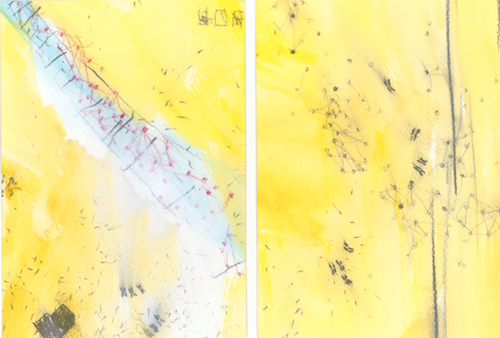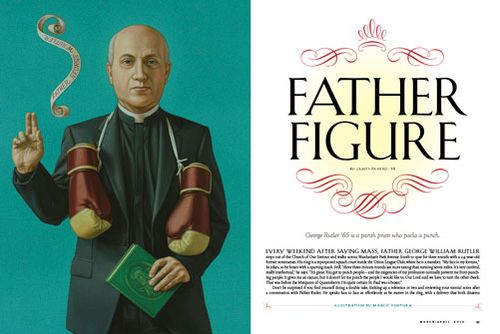Tim Tebow appearing in Superbowl commercial for Focus on the Family, 2010
NEW YORK DAILY NEWS
April 1, 2012
Time for Tim Tebow to stand tall
by James Panero
His voice and values may be just what New Yorkers are looking for
Out of the circus that has surrounded the arrival of the Jets new backup quarterback, one thing is clear: New York has never seen a culture warrior like Tim Tebow — a fact that could challenge the city in profound ways.
For this “muscular Christian,” football and faith have been a winning combination. And like his game on the field, Tebow’s powers of religious persuasion didn’t come by chance. They date back long before his star turn for the Denver Broncos, his championship runs with the Florida Gators or the local squad he joined as a home-schooled teenager.
Tebow is an evangelist — not just for his Christian faith, but more importantly, for the kind of living it commands. And now, rather than that message being spread in more conservative Colorado, Tebow has the opportunity to practice what he preaches on the world’s largest stage.
In a city where sky-high abortion rates are rarely questioned, he should spotlight the problem. In a city where churches are being forced out of public schools on weekends, he should speak for them. In a city where abstinence-only sex education is passé to the powers that be, he should connect with young people on the virtues of saving oneself for marriage.
Call it Tebow’s biggest mission.
Abortion is the first and most obvious opportunity. The son of Baptist missionaries, Tebow was born in the Philippines. While pregnant, his mother Pam went against doctors’ orders and refused to have an abortion. This story has long informed Tebow’s own pro-life beliefs. During the 2010 Super Bowl, the organization Focus on the Family famously aired a pro-life advertisement featuring her being “tackled” by her loving son.
The ad proved to be a simple and positive treatment of a mother’s love for her “miracle baby.” “He almost didn’t make it into this world,” she said. “I can remember so many times when I almost lost him.”
Airing this soft-sell ad despite the pushback from abortion groups became a victory for Tebow and his convictions. He later claimed that a survey revealed that 5.5 million viewers changed their stance to pro-life because of its message. A football star can be a powerful argument against an abortion that had once been presented as a medical necessity.
What better place to repeatedly make the case than in New York City? This is the country’s “abortion capital,” with the highest rate of any city in the nation. Yet it’s rarely discussed that fully 40% of all pregnancies here end in abortion — 83,000 in 2010 — compared to 23% nationally, according to the Chiaroscuro Foundation.
It’s not that New Yorkers are happy about the fact: Two-thirds of us, including a majority of pro-choice supporters, believe these numbers are too high. It’s just that we’d prefer not to think about it. That may be coming to an end; it’ll be impossible for Tebow to ignore the epidemic in his new backyard.
Second, Tebow should challenge a city administration that’s been downright hostile to a few dozen small churches fighting for the right to use public school space on weekends. If secular groups can rent the spaces, the churches contend, why should religious organizations be forbidden?
But that’s precisely what Michael Bloomberg has fought to do, citing a policy prohibiting “worship services” that courts have, up until now, endorsed.
A visit from Tebow to the Bronx Household of Faith, which is at the eye of this storm, would send a powerful message and likely change many minds.
And imagine if, instead of only serving as a spokesman for car dealerships and clothing brands like other sports stars, Tebow also uses his celebrity to sell New Yorkers on the evangelical Christian values that course through his bloodstream. For example, back in 2009, Tebow openly admitted in a press conference that he was a virgin — an earnest and honest expression of his convictions.
That sort of straight talk could win him many converts of the literal kind. Kids wearing his jersey might think twice before getting pressured by peers to engage in irresponsible behavior.
None of this is a leap of faith: Unlike Charles Barkley, who famously chafed when called a “role model,” Tebow embraces the term.
The Tim Tebow Foundation, which the football star first envisioned when he was an undergraduate, now uses “the public platform that God has blessed Tim Tebow with to inspire and make a difference in people’s lives throughout the world,” according to its website. As the testimonial from coaching legend Tony Dungy makes clear, “His leadership and Christian values set an example not just for his teammates, but for all young people.” Now, he has the opportunity to set an example for New Yorkers of all ages.
In the process, he just might call New York City to recognize its true character, hidden in plain sight. Much has been made about the pious Tebow landing in a heathen town. “So the Denver Broncos have sent quarterback Tim Tebow to the New York Jets, which is akin to dropping the Christian among the lions,” wrote Tracee Hamilton in the Washington Post.
It’s a common refrain, but it relies on a caricature. New York is far from the Gomorrah that Woody Allen describes in “Annie Hall”: “Don’t you see the rest of the country looks upon New York like we’re left-wing, communist, Jewish, homosexual pornographers? I think of us that way sometimes, and I live here.”
In fact, Andrew A. Beveridge, a professor of sociology at Queens College and a demographer at Gotham Gazette, reports that an “estimated 6.8 million New Yorkers — or more than 83% of the population — were identified as being affiliated with some organized religion in 2000.”
Just how religious does that make New York City? More religious than all states except Louisiana and “even slightly higher than Utah,” writes Beveridge.
From the tallest church in America — Riverside Church, at 22 stories — to the seat of a newly reinvigorated Catholic archdiocese led by Timothy Cardinal Dolan, to the epicenter of American Jewry, to evangelical ministries now sprinkled into old theaters throughout the city, New Yorkers take their religion seriously but silently.
Tebow’s words and, more importantly, his actions, can help get religion out further into the public square.
“If people are still somehow talking about prayer or talking about my faith, then I think that’s pretty cool,” Tebow said on Monday.
Just days after his arrival, that strategy is already working.
UPDATE: Syracuse Post-Standard picks up on this story and reports the Jets may have other ideas for their backup quarterback.


